During the warmer months of the year, when you and your family spend more time walking and playing in your yard, the grass may thin out in certain areas. In such situations, overseed lawn without aerating is a standard way to revive the root system of the grasses in the yard.
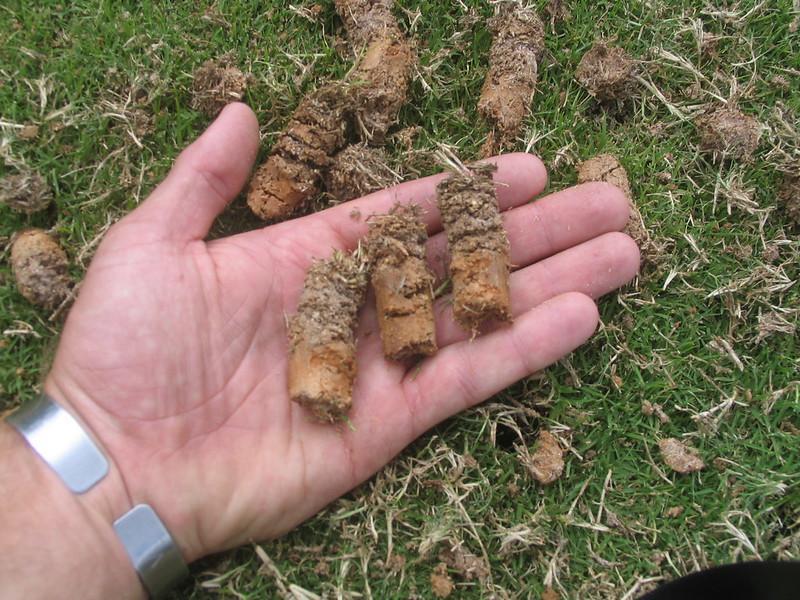
However, it is time demanding, and the lawn can appear unsightly for several weeks after the process is finished. That is why you don’t need to aerate your lawn; if it is thinning and all it needs is a little more grass, you can overseed it too!
Overseeding is the practice of planting new grass seed without removing any existing grass or soil. It is a fantastic technique that results in a great many positive outcomes.
For instance, it is the quickest method for increasing the thickness of the grass, it can be implemented to fill bare spots on your thinning lawn, and it makes the yard visually pleasing.
The one and only drawback of overseeding is that it frequently requires the aeration of your lawn first. So, how do you overseed without aerating?
For overseeding a yard without aerating, you can start by mowing the grass shorter than two inches and then rake the lawn to break up the topsoil and remove excess thatch.
It will allow the seeds to penetrate the soil more easily. Next, spread the seeds and rake them over. Following that, fertilize your lawn with a starting fertilizer, water it lightly and mow the grass when it reaches a proper height.
That said, you still have to make a few adjustments before overseeding a lawn that has not been aerated. Continue reading this article to learn more!
Why Overseed A Lawn?
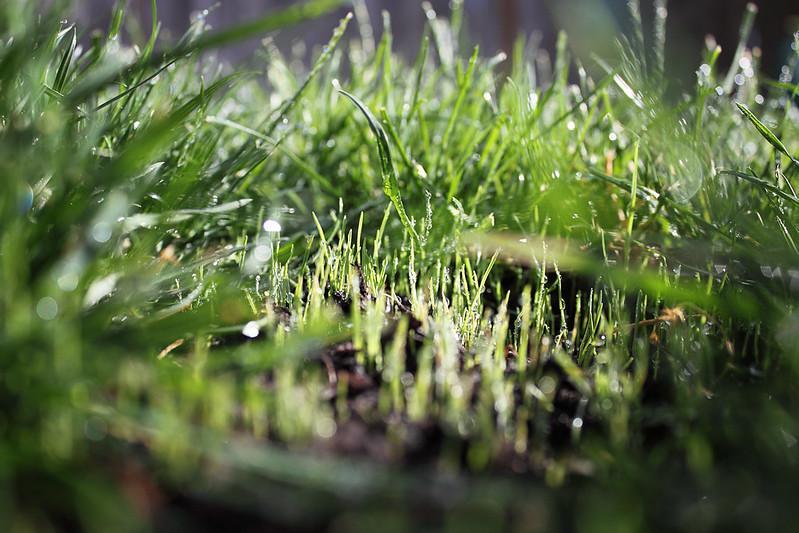
Overseeding is a worthwhile investment that will allow you to improve your existing lawn as quickly as possible.
Overseeding can help you cover any bare or sparse spots in your grass, and it is an efficient method for boosting the thickness of your lawn in a short time. In addition, overseeding allows you to gradually replace older grass with new grass.
Overseeding allows you to experiment with and try many better grass varieties. For instance, you can overseed an existing lawn with buffalo grass to reduce watering or fertilizing costs.
Or, you can overseed a lawn with Zoysia grass, which is quite resistant to weeds, plant diseases, and drought after it has matured.
In short, overseeding is the most successful method for making your lawn thick and full. Not only will overseeding provide your yard a thick, full appearance, but it also provides a fantastic solution for bare spots in your grass caused by pests and foot traffic.
What Is The Best Time To Overseed A Lawn?
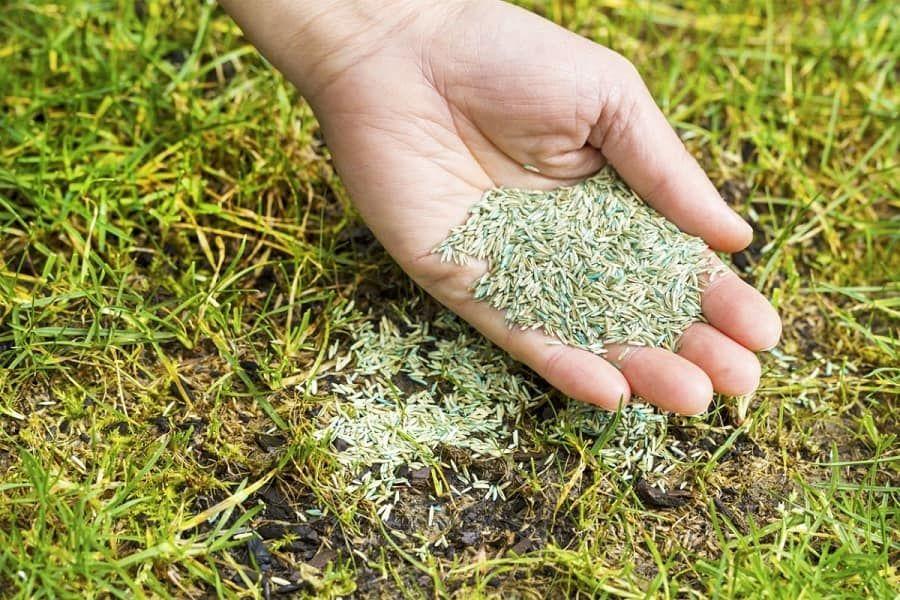
In most cases, you can get overseeded whenever you choose; the timing of overseeding has nothing to do with the season. However, the timing still has an effect on the rate of success you obtain from overseeding.
Most professionals will agree that the optimal time for overseeding a lawn is either late summer or the early stages of fall.
This is the time of year when the soil temperature and the temperature of the surrounding air is favorable for seed germination and growth.
Therefore, if you decide to overseed your lawn during this time, you will not have to worry much about the development of the grass.
All that is required of you is to ensure that the seeds are provided with adequate sunlight, fertilizer, and water. You do not need to be concerned about anything else, including the spread of weeds, the temperature, or any other annoyance that may arise.
RELATED: When & How To Overseed A Lawn For The Best Results? A Simple & Easy Guide
How To Overseed Without Aerating The Lawn?
Many of us believe that aeration is unavoidable when overseeding our lawns. While aerating a lawn prior to overseeding has its benefits, it is not always absolutely necessary or needed. The expression “there are many more ways to skin a cat” aptly describes this situation.
So, it should come as no surprise, then, that there are also ways that do not require aerating your grass in order to overseed it. So, without further ado, let’s go over a step-by-step guide to how you can overseed a lawn without aeration.
This approach has been quite simple for me over the years and has significantly increased my savings. In addition, I no longer require a professional to overseed my lawn.
So, if you follow these instructions carefully, you should be able to get a yard that is fuller and more verdant in appearance. The best part? There is no need for aeration!
Things You Will Need For Overseeding
- 10-10-10 starter fertilizer
- Broadcast spreader
- Broom
- Dethatcher
- Drop spreader
- Grass seed
- Lawn mower
- Lawn sprinkler
- Metal rake
- Nitrogen
- Power rake
- Sand
Mow The Lawn
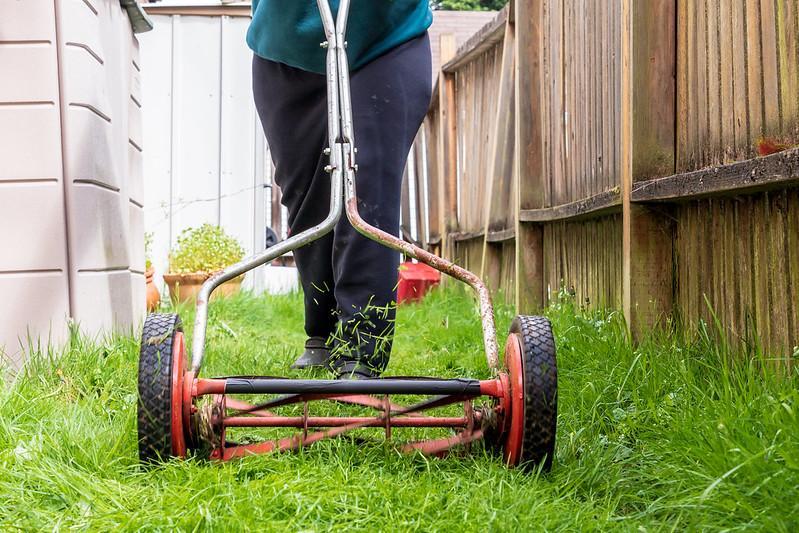
Once you have collected everything you need, you can start overseeding your lawn by mowing the grass. This is the first thing you will want to do since it will give the grass seeds a chance to sprout without competing with the established grass and weeds.
This could be done by mowing the lawn to a height of less than one or two inches. Since the presence of tall grass blades increases the likelihood of seeds becoming lodged in the tall grass, which in turn leads to a decrease in the growth percentage, cutting the grass reduces the quantity of seed that is lost.
Additionally, mowing the lawn short prevents weeds from sprouting as well as the grass that is already present in the lawn, which lessens the extent of competition. This allows the fresh grass seeds a sufficient amount of time to germinate and begin growing.
Cleaning up all the cutting waste and clippings after you have finished cutting is also necessary. In addition, make sure there is no mulch on the grass during and after mowing your lawn for overseeding. Mulch will stop the seeds from making appropriate contact with the soil, which will hinder the germination process.
Pro Tip: Under no circumstances should grass seed be planted after a pre-emergent has been applied to the lawn. Not only will it prevent the weeds from developing, but it will also stop your new grass seed from germinating as well.
Choose The Right Grass Seed

Overseeding a lawn with a select variety of grass seeds will keep the yard looking its best while also helping it resist drought and disease.
Not all types of grass seed flourish in all temperatures; some are better adapted to cold conditions, while others can only survive in warm areas. So, choose a grass seed based on what grows best in your region.
If the existing grass in your yard is performing well in general, then that particular grass seed is the ideal choice for overseeding. There isn’t really a need to switch to a different variety of grass unless the existing grass has issues such as weeds, lawn diseases, etc.
For overseeding, many people decide to combine different kinds of seeds, and if you intend to do so, I suggest using a mixture of Kentucky Bluegrass and Tall Fescue. If you decide to use a pre-mixed mix, I advise you to buy it in a local gardening store.
They’ll have a blend of grass seed intended to grow well in your area; just be sure what you’re buying contains very little weed seed and filler.
Rake The Soil
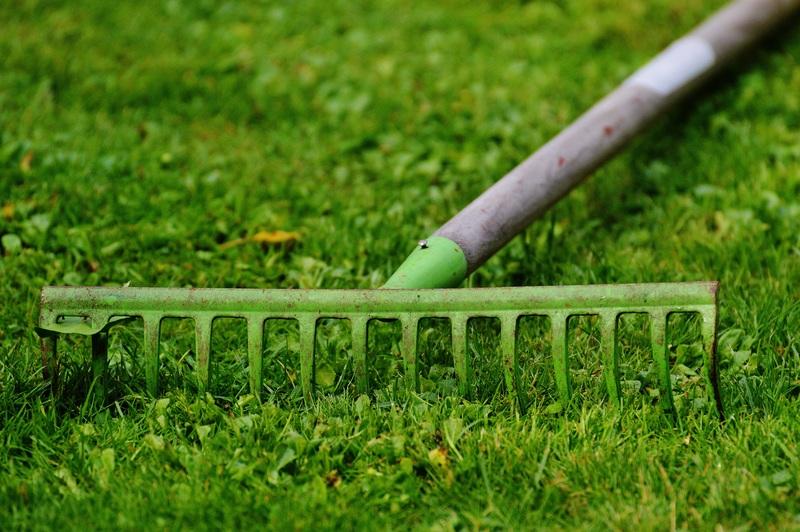
With some dead grass (thatch) on top of the ground, germination can be low, making it critical to rake before overseeding the lawn. Also, the grass seed will have an easier time making contact with the soil if you rake the area first.
Remove any debris, such as sticks and rocks, from the grass by raking your lawn. You can rake the yard with your hands or use a manual hand rake.
If you want to use a power rake, know that the process leaves some damage to the grass, so you should start as soon as possible to give your yard plenty of time to recover.
Raking also removes some of the dead grass that has accumulated on the surface of the ground. If the thatch is at least half an inch thick, you can also use a dethatcher.
Spread The Grass Seed
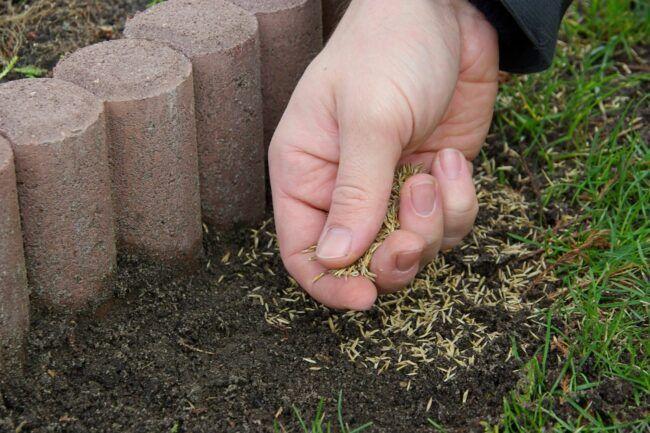
For small areas, distribute the seeds by throwing them over your lawn with your hand. However, to evenly distribute the seed across a big area, you can either use a broadcast spreader or a hopper spreader. Every spreader will come with instructions for the ideal setting for overseeding versus seeding new grass.
However, in the end, it is entirely up to you how many seeds you plant and what strategy you want to implement in order to disperse the seeds. When you are finished, the grass seeds should be spread out in a uniform manner.
They should be spaced between one-quarter and half an inch apart. If you plant the grass seed too closely, the new grass plants will face intense competition from each other, which will stunt their growth.
On the other hand, if you don’t spread the seeds densely enough, weeds might move into the bare spots of your lawn.
Rake & Cover The Seeded Area
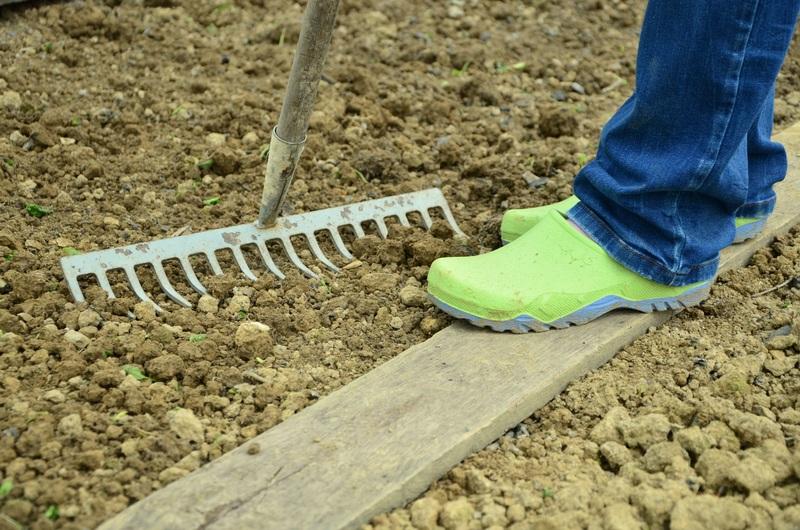
While overseeding, when seeds are just placed on the top surface of the lawn, it quickly dries out and does not germinate. It is also possible for the seeds to be blown away by the wind or washed away by water.
To ensure that the seeds are buried, spread an additional, thin layer of the soil across the top of the seeded area.
If you do not have soil to place on top of the seeds, you will need to work the seeds into the ground to a depth of about one-third to one-half of an inch. Be careful not to overdo this, as you may wind up burying the grass seed too deep into the ground.
It is strongly recommended that you rake in all directions rather than just one. It will prevent the water from evaporating immediately, keeping the ground from drying out. In addition, it shields the seeds from hungry birds and animals.
Apply A Fertilizer To The Seeded Area
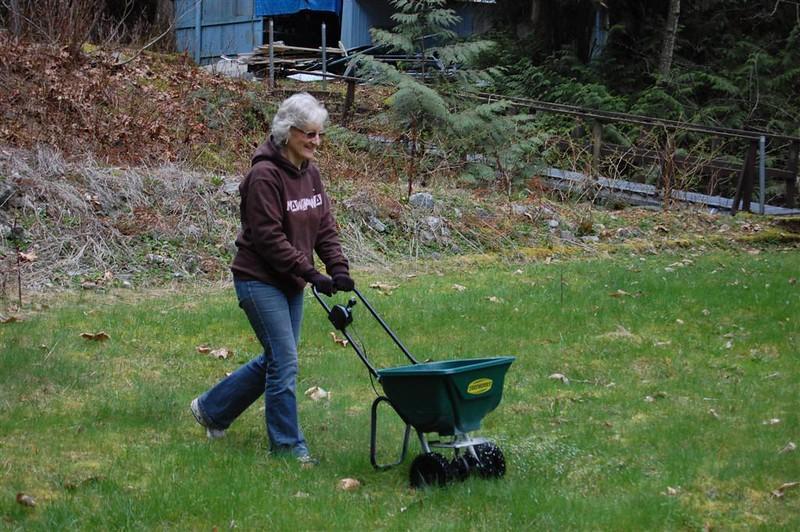
Fertilizer is critical to the overall health of the new grass shoots and roots. The sooner you fertilize, the better it is for your grass seeds as they work to establish themselves. At the start, you should use fertilizers that are high in potassium.
This aids in the growth of roots as the seeds germinate. However, steer clear of using weed and feed fertilizers since some of the pre-emergent herbicides present in such products can inhibit the germination of fresh grass seeds or the growth of their root systems.
Nevertheless, aim to apply around two pounds of fertilizer per 1,000 square feet of your lawn. Moreover, you want the fertilizer application to be even, have good contact with the soil, and be thoroughly mixed in.
RELATED: Nitrogen for Houseplants: Why is It Important for Growth and Reproduction of Plants?
Maintain A Regular Watering Schedule
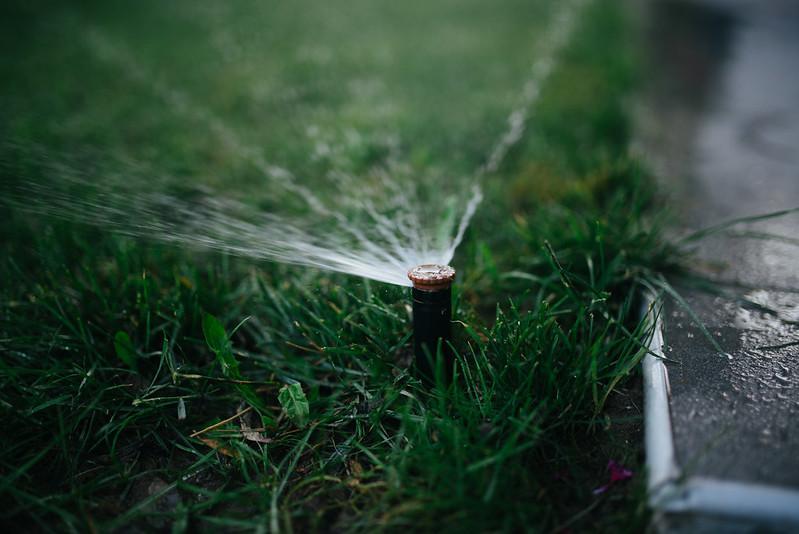
When planting new grass seed, it is crucial to ensure the soil stays moist. Therefore, the new grass seeds should ideally be watered two to three times daily for approximately five to ten minutes. This way, any water that has evaporated can be replaced.
Once the seeds have germinated, you can cut back on watering your lawn. However, now water your yard for a greater period of time each time.
Try to get 10 to 15 minutes of water every day. It might seem like a short amount of time to water so much grass seed, but you only need a small amount of water to wet the soil thoroughly.
The seeds could be killed if they were submerged in an excessive amount of water. When watering, avoid concentrating on particular, constrained regions. Make sure that a uniform amount of water is applied to the entire area of the lawn.
Final Thoughts
Although we would all like for our lawns to be in perfect condition everywhere, all the time, this isn’t possible. That is why we need to regularly monitor the well-being of our yards so that they stay lush and green.
One way to do that is to overseed a lawn. However, overseeding is often accompanied by soil aeration. Aerating your lawn takes a lot of effort and may leave it looking unsightly for several weeks after the process is complete. The good news is that it is possible to overseed a lawn without first aerating it. Read the above article for more information.
Frequently Asked Questions (FAQs)
Should I aerate before or after overseeding?
It is a good idea to aerate your grass before overseeding it. Aerating the soil before overseeding can assist the ground to be better prepared for absorbing nutrients and keeping in new seeds, which will improve your results. Aerating your lawn also increases the oxygen flow, which is necessary for healthy, lush grass.
Can you just sprinkle grass seed on your lawn?
Even though it is possible to just scatter the fresh grass seed over your existing lawn, spending some time to get your lawn soil ready beforehand will boost the chance of seed germination and improve the end results.
How long do you have to wait to mow after overseeding?
When grass is mowed immediately after overseeding, the growth of the grass is stopped, and the seeds are damaged. So, wait at least two to four weeks and let the grass reach a height of about three to four inches before mowing your lawn.
Can I overseed myself?
You can overseed your grass on your own if the lawn care company you employ cannot do so. The procedure of overseeding your lawn is not difficult; however, you do need to follow a good guide to guarantee that the seeds will successfully germinate.
Should grass seed be covered with soil?
Even though grass seeds can germinate even if they are not covered, applying a thin layer of mulch, straw, compost, or topsoil over the top of your seed is typically better. It will help keep it moist and facilitate the germination process.
Sources for Further Reading
Lawn Aeration and Overseeding – University of Illinois Extension Service
Lawn Renovation & Overseeding – University of Massachusetts Amherst Extension Service
Should You Aerate Your Lawn? – North Dakota State University Extension Service







